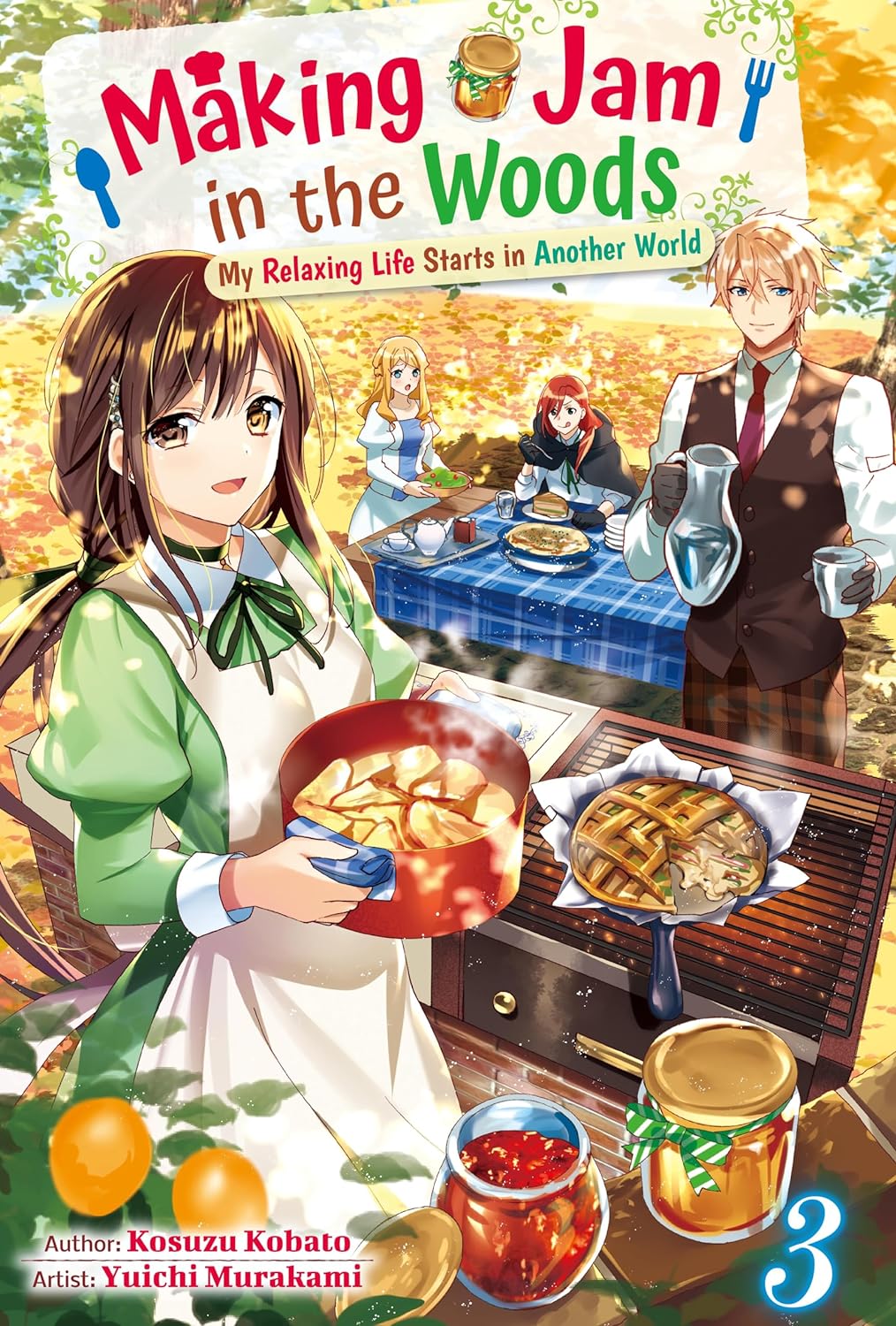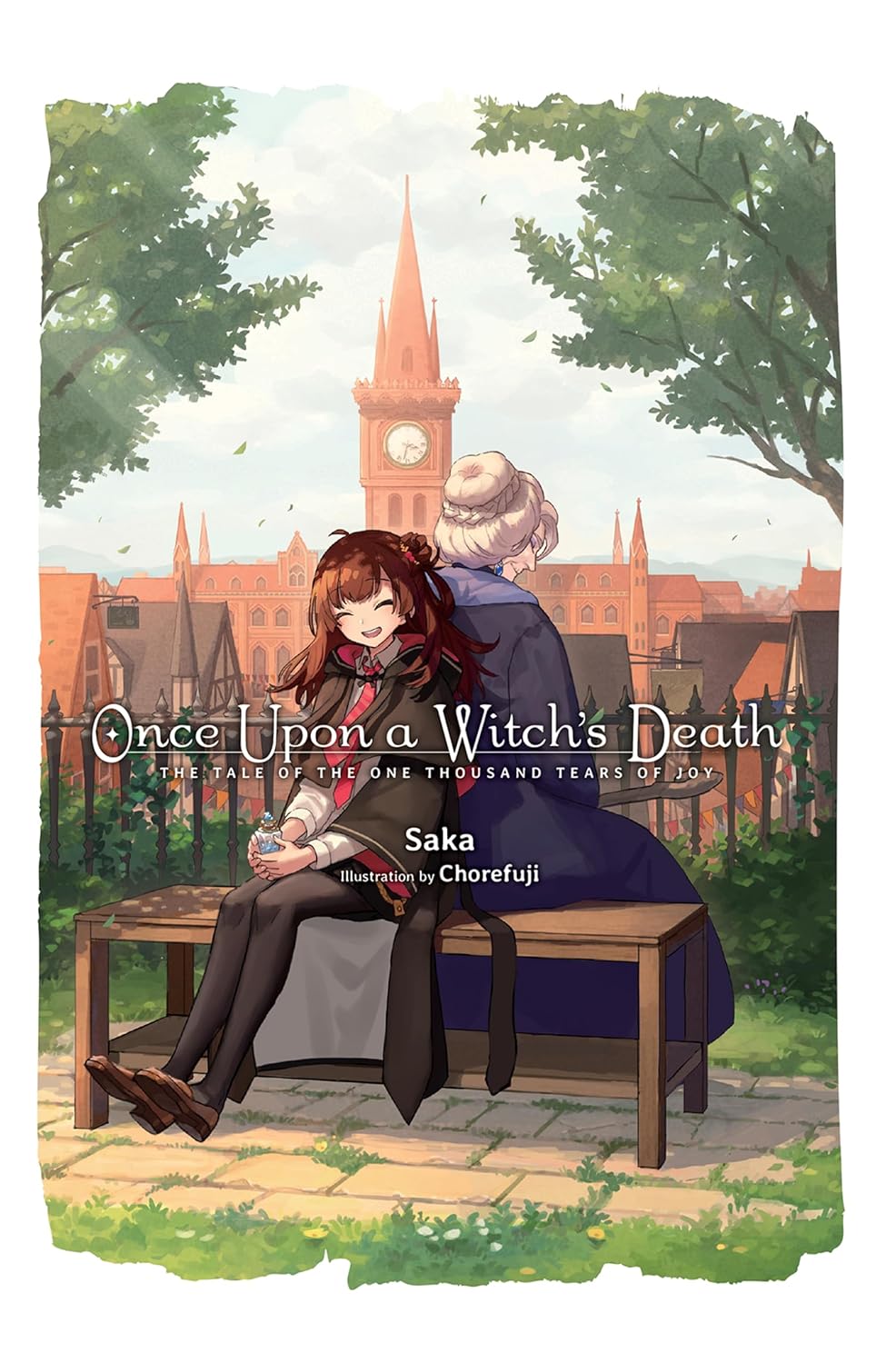By Kosuzu Kobato and Yuichi Murakami. Released in Japan as “Mori no Hotori de Jam wo Niru: Isekai de Hajimeru Slow Life” by Kadokawa Books. Released in North America by Cross Infinite World. Translated by Jade Willis.
The author says in the afterword that the webnovel version of this series ended with the second book, and that this third volume was an “after story” written for the published books. That might be a bit of a surprise given that this book ends with Margaret and Mark’s wedding, which you would have expected to end the series proper, and also that it manages to (mostly) resolve the other open-ended romance in the series. But it also does explain some things, like the total lack of conflict in this volume. If this is a final volume, there’s no real resolution of the “Spirit Caller” plotline. Sure, Margaret does meet with the Spirit herself, and we learn a little bit about her that may have odd implications, but in the end if that scene wasn’t in this book nothing would change. This volume is pleasant little scenes that chug along until we get to the end. And honestly, that’s fine.
Margaret and Mark are together, and she’s living a happy life with Adelaide and Daniel, but that doesn’t mean there aren’t more things to do. First of all, there’s jam making, as Rachel (who is very carriage sick, as Walter is too busy and couldn’t come) returns so they can hang out and talk about romance together. Then Margaret finally goes to the capital,,, not to meet the royal family, but so that she can sign off on the illustrations for her children’s book, which have an incognito artist. After this, Walter, who has been doing nothing but work for the past x months, finally collapses, and is forced to both take time off and have to face up to the fact that Rachel is in love with him… and also getting proposals from other men. And Margaret also finds that her total lack of mana makes her ideal in dealing with the children at the magic academy, all of whom suffer from too much of it.
I will admit by the end of the volume I was wondering if this series started off as one of those recipes you see online, the kind that can’t give you directions without a long story first. The jam making is detailed for pages on end, and I’d be interested in seeing if anyone tries it out using this volume. I will admit I was briefly worried when Rachel met the Spirit and got her voice back, but it turned out that this was something that could only happen when she was in Spirit Land, so when she returns she is still mute and her leg is still not quite healed. I appreciated this, as it underlines the actual plot revelation from Book 2: Margaret’s summoning was entirely by accident. In the last scene in this book, Margaret wonders to Mark if her life will continue to be troublesome due to her calling. I’m not sure, I suspect as her life goes on the crisis moments will continue to be small in number, and the jam making, trying on dresses, and being good with kids will take up far more.
In the end, this series is just NICE. I’m glad I read it.



